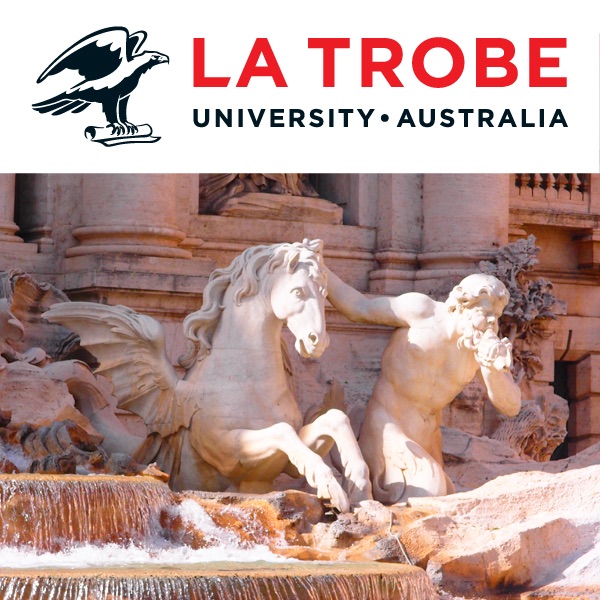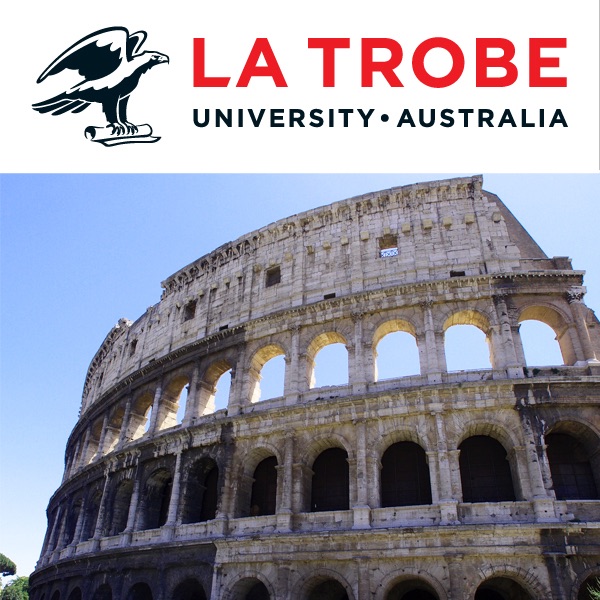
Classical Mythology
Dr Rhiannon Evans
In this subject we explore Greek and Roman mythology, with particular reference to some core narratives and themes. Greek mythology is very focused around hero myths, and this is a central aspect of our study. Heroes studied in the subject include Heracles, Jason, Perseus, Bellerophon and Odysseus. We also examine some key thematic elements of Classical mythology- the figure of the monster, the sexual conduct of gods and mortals, conception and birth, fire, images of the underworld and life after death. The adaption of Greek myth in Italy (Entruscan and Roman) to meet the needs of different cultures will be explored. Sources dealt with in the subject include epic poetry, drama, painted vases, tomb paintings, and architectural remains. We conclude the subject with some modern cinematic adaptations of mythic themes from the ancient world.
- 40 minutes 54 secondsMyth in Film
Classical myth and film have a long history of being intertwined, as myth was made into film from the days of silent movies, and ancient texts themselves often use what we might see as ‘cinematic’ techniques when framing a scene. This lecture explores how Greek and Roman myths have appeared on screen from the ‘historical’ epics of the 1950s and 1960s, through dubbed Italian musclebound heroes to the new CGI epics such as Clash of the Titans. It also considers how mythic tropes are recontextualised in modern scenarios, in films like Oh, Brother, Where Art Thou? which models itself on the Odyssey.
Copyright 2013 Rhiannon Evans / La Trobe University, all rights reserved. Contact for permissions.
5 June 2013, 2:04 am - Myth in Film (handout)
Classical myth and film have a long history of being intertwined, as myth was made into film from the days of silent movies, and ancient texts themselves often use what we might see as ‘cinematic’ techniques when framing a scene. This lecture explores how Greek and Roman myths have appeared on screen from the ‘historical’ epics of the 1950s and 1960s, through dubbed Italian musclebound heroes to the new CGI epics such as Clash of the Titans. It also considers how mythic tropes are recontextualised in modern scenarios, in films like Oh, Brother, Where Art Thou? which models itself on the Odyssey.
Copyright 2013 Rhiannon Evans / La Trobe University, all rights reserved. Contact for permissions.
5 June 2013, 2:03 am - 39 minutes 47 secondsGreek Myth at Rome: Power
Ovid’s Metamorphoses was written during the Augustan period, and it is clear that its author was often out of tune with the political regime. This lecture explores the different ways in which the poem transforms Greek mythology to explore issues such as power, justice and censorship. Ovid’s gods often exert power arbitrarily, punishing those who are already victims or taking revenge for perceived slights. Here we explore the ways in which Greek myth can function as a contemporary critique of Roman society.
Copyright 2013 Rhiannon Evans / La Trobe University, all rights reserved. Contact for permissions.
5 June 2013, 2:02 am - Greek Myth at Rome: Power (handout)
Ovid’s Metamorphoses was written during the Augustan period, and it is clear that its author was often out of tune with the political regime. This lecture explores the different ways in which the poem transforms Greek mythology to explore issues such as power, justice and censorship. Ovid’s gods often exert power arbitrarily, punishing those who are already victims or taking revenge for perceived slights. Here we explore the ways in which Greek myth can function as a contemporary critique of Roman society.
Copyright 2013 Rhiannon Evans / La Trobe University, all rights reserved. Contact for permissions.
5 June 2013, 2:01 am - 50 minutes 11 secondsGreek Myth at Rome: Metamorphosis
Ovid’s Metamorphoses is one of the most significant ancient texts for the study of Greek mythology, but we should remember that this is a Roman work, which absorbs influences from the whole of the Mediterranean world. This lecture looks at the poem’s cosmogony in book and compares it to the Hesiodic version (explored earlier in lecture 2), showing how various philosophical and scientific ideas have been added to the Ovidian mix. We also see how Ovid sets up the parallel between the Olympian gods, particularly, Jupiter, and the emperor Augustus, a fact which makes this poem both topical and politically contentious.
Copyright 2013 Rhiannon Evans / La Trobe University, all rights reserved. Contact for permissions.
31 May 2013, 3:38 am - 45 minutes 28 secondsRoman Identity II: Heroines
Although Ancient Rome was clearly a patriarchal society (literally so, as the father had supreme power in the Roman household), Roman myth also features many prominent women, from the Sabine wives who intervene to end a war, to individualised women (both heroines and demonised women) who show us which qualities Romans valued in women. These myths are often connected to female sexuality, particularly in the case of Lucretia, whose rape brings about a political revolution, inspiring the end of the Monarchy and the foundation of the Republic.
Copyright 2013 Rhiannon Evans / La Trobe University, all rights reserved. Contact for permissions.
23 May 2013, 2:18 am - Roman Identity II: Heroines (handout)
Although Ancient Rome was clearly a patriarchal society (literally so, as the father had supreme power in the Roman household), Roman myth also features many prominent women, from the Sabine wives who intervene to end a war, to individualised women (both heroines and demonised women) who show us which qualities Romans valued in women. These myths are often connected to female sexuality, particularly in the case of Lucretia, whose rape brings about a political revolution, inspiring the end of the Monarchy and the foundation of the Republic.
Copyright 2013 Rhiannon Evans / La Trobe University, all rights reserved. Contact for permissions.
23 May 2013, 2:17 am - 46 minutes 25 secondsRoman Identity I: Heroes
Rome’s mythic history is littered with heroes who exemplify positive and negative ways of behaving. Livy in particular is fond of using mythic figures as exempla in his historical work, but we see it elsewhere too, for example in poetry and in public monuments. This lecture explores the qualities which are celebrated in Roman heroes, and examine the way that the state is prioritised over personal relationships and the family in many of them.
Copyright 2013 Rhiannon Evans / La Trobe University, all rights reserved. Contact for permissions.
23 May 2013, 2:16 am - Roman Identity I: Heroes (handout)
Rome’s mythic history is littered with heroes who exemplify positive and negative ways of behaving. Livy in particular is fond of using mythic figures as exempla in his historical work, but we see it elsewhere too, for example in poetry and in public monuments. This lecture explores the qualities which are celebrated in Roman heroes, and examine the way that the state is prioritised over personal relationships and the family in many of them.
Copyright 2013 Rhiannon Evans / La Trobe University, all rights reserved. Contact for permissions.
23 May 2013, 2:09 am - 45 minutes 15 secondsRome II: Asylum: Romulus and Remus
Romulus was revered as the founding hero of Rome, later made a god, but his myth is not without ambiguity. A significant element of the city foundation story is the murder of his brother Remus, and the most common version of this myth is that Romulus himself was responsible. This lecture explores the difficulties which fratricide presented to the Romans, how they tried to explain it, and how it has been analysed by scholars of Roman myth as a story which was makes sense of Rome’s social and political history.
Copyright 2013 Rhiannon Evans / La Trobe University, all rights reserved. Contact for permissions.
16 May 2013, 3:19 am - Rome II: Asylum: Romulus and Remus (handout)
Romulus was revered as the founding hero of Rome, later made a god, but his myth is not without ambiguity. A significant element of the city foundation story is the murder of his brother Remus, and the most common version of this myth is that Romulus himself was responsible. This lecture explores the difficulties which fratricide presented to the Romans, how they tried to explain it, and how it has been analysed by scholars of Roman myth as a story which was makes sense of Rome’s social and political history.
Copyright 2013 Rhiannon Evans / La Trobe University, all rights reserved. Contact for permissions.
16 May 2013, 3:18 am - More Episodes? Get the App
Your feedback is valuable to us. Should you encounter any bugs, glitches, lack of functionality or other problems, please email us on [email protected] or join Moon.FM Telegram Group where you can talk directly to the dev team who are happy to answer any queries.
 The Fall of the Roman Empire (Bryan Ward-Perkins)
The Fall of the Roman Empire (Bryan Ward-Perkins)
 Faculty of Classics
Faculty of Classics
 Ancient Greece: Myth, Art, War
Ancient Greece: Myth, Art, War
 The Roman World
The Roman World